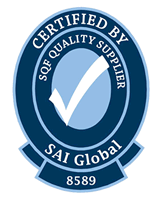“Fit-for-use” assessments help food companies decide on the best type of packaging for their products.
The meaning of the term “fitness” or “fit for use” as it relates to packaging, especially food packaging, has changed a lot in recent years. It used to refer primarily to a package’s ability to keep food fresh and protected. Now, “fit for use” assessments also take into account the sustainability and environmental impact of the packaging. A recent article on Packaging Digest’s website took a look at those evolving standards.
The article refers to this type of sustainability as “packaging environmental responsibility,” and it says these decisions can be shaped by a number of factors. These include the type of food, the way it is intended to be consumed, and the region where it is going to be sold. A fit-for-use assessment should take all of these into account, while still making sure that food safety and preservation aren’t sacrificed in the process. If the food goes bad and winds up in a landfill, that does nothing to benefit the environment.
When reviewing the type of food, a fit-for-use packaging assessment should look at whether the foods are perishable, processed, frozen, liquid, or pre-cooked. Each of these factors will play a part in determining the material, design, and properties needed for safe and effective packaging. Additionally, factors like convenience and portability, aesthetics, and preservation are major factors, especially in the American marketplace.
The article also points out that cultural differences should be considered, as well. The way packaging is designed may differ in other parts of the world due to cultural and economic factors. For example, Asian countries place a strong emphasis on fresh, home-cooked meals, while environmental sustainability and reducing waste are bigger concerns in Europe. This should be reflected in the packaging selected for food products that are meant to be marketed in these geographies. Packaging decisions are influenced by the diet and culture of each region, which leads to variations in the materials, design, and sustainability attributes.
To read more about the factors that can go into an effective fit-for-use assessment, read the full article on Packaging Digest’s website.
When is the last time you reviewed your food packaging for fitness? Do you know which factors are most important to your customers, and are you designing with that in mind? At AMGRAPH, we can help you with that! We’re experts in a range of sustainable packaging options, and we can help you assess your packaging needs to create the best solution both for your product and your customers. Give us a call today!









